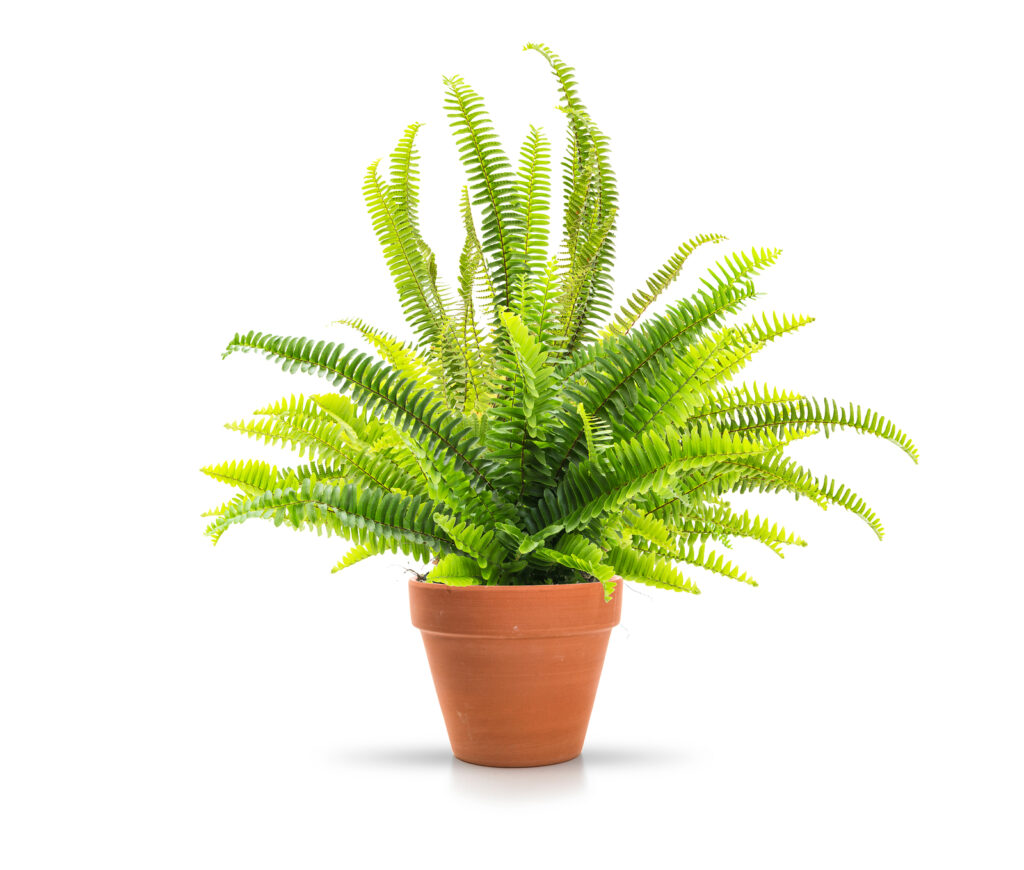Ferns are a large group of perennials. They can vary in height from a few inches to 50 feet. Most are forest plants. Plant ferns outdoors in a cool, shady place. Indoors, ferns grow well in indirect light away from drafts or forced air.
Get to know Ferns
- Plant type: Perennial
- Growing Zones and range: 9-11
- Hardiness: Average conditions with day temperatures up to 75°F (24°C) and nights between 55° and 65°F (13°F/18°C)
- Light: Medium to high, indirect light
- Height and width: 10” to 36” or more depending on the variety
- Foliage: Glossy deep green fronds
- Uses: Grow outdoors, houseplant
- Botanical name: Various genera – see a few below
- Common name: Ferns
Growing Ferns
- Grow ferns in small pots in a light, well-drained, all-purpose mix with added peat moss and perlite.
- Grow outdoors in moist, humus-rich soil that is neutral or slightly acidic.

How to water and feed Ferns
- Keep evenly ferns moist, water daily if necessary. Extra humidity is a plus.
- Fertilize ferns twice a year—in early spring and early summer—with fish emulsion.
Ferns care
- Repot ferns in spring as needed. Grow ferns in soil rich in organic matter.
- Mulch outdoor ferns in winter.
- Ferns in spots too dark or shaded can become thin and disease prone
Ferns common problems
- Scales may produce small, irregularly spaced spots on the fronds; scrape them off with or fingernail, or with a cotton swab.
- Lower fronds commonly turn yellow and die back; lift the healthy green leaves and trim off the dead fronds; this will stimulate new growth.
Ferns propagation
- Divide clump-forming ferns; grow new plants from spores, or pin the runners to soil and repot them when they are rooted.
Ferns varieties to grow
- Boston fern (Nephrolepis exaltata ‘Bostoniensis’) has graceful, arching fronds.
- Maidenhair ferns (Adiantum spp.) thin, dark stems and lacy, light green fronds.
- Australian maidenhair (A.hispidulum) has a rugged look.
- Rabbit’s foot fern (Davallia fejeensis) has furry-footed rhizomes.
- Bird’s nest fern (Asplenium nidus) unfernlike fronds; excellent houseplant; epiphyte can grow without soil can grow in sphagnum moss.
- Staghorn fern (Platycerium bifurcatum) epiphyte can grow without soil can grow in sphagnum moss.















